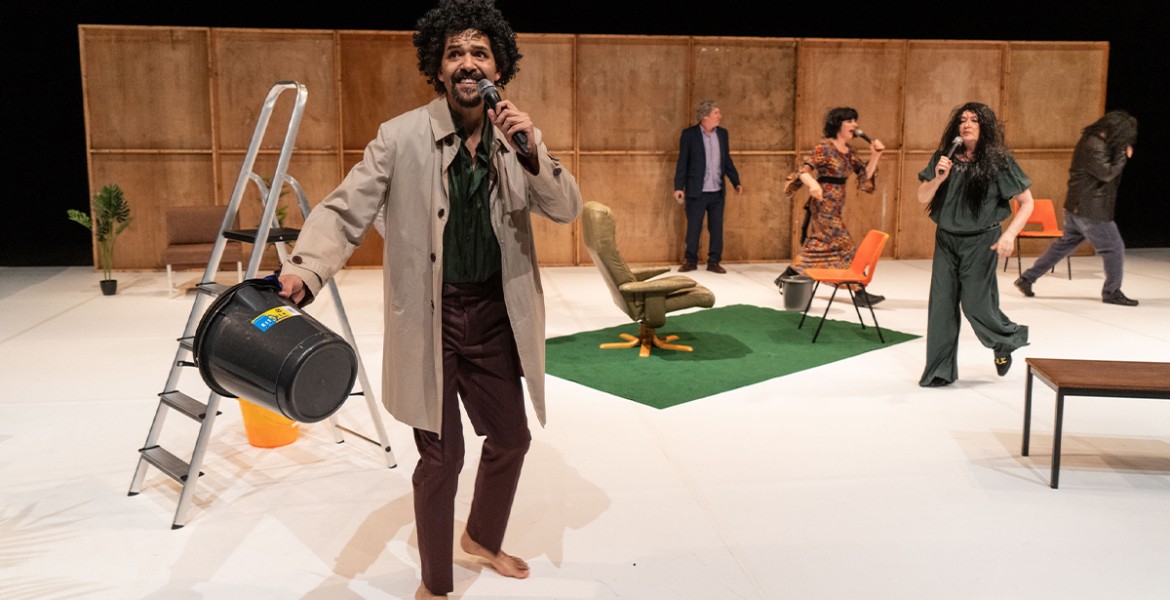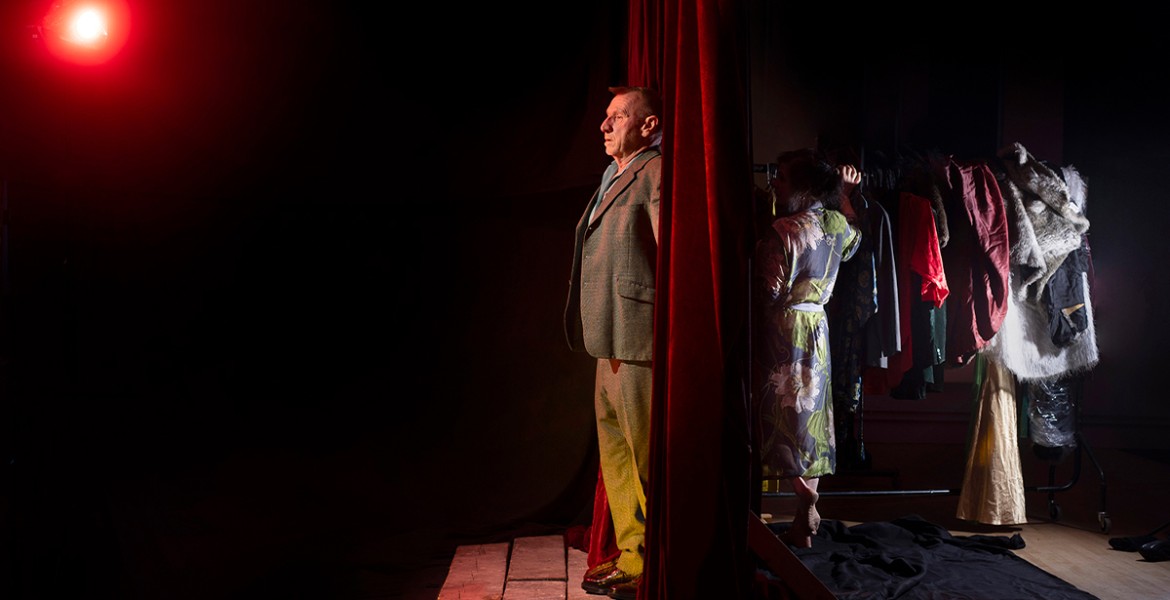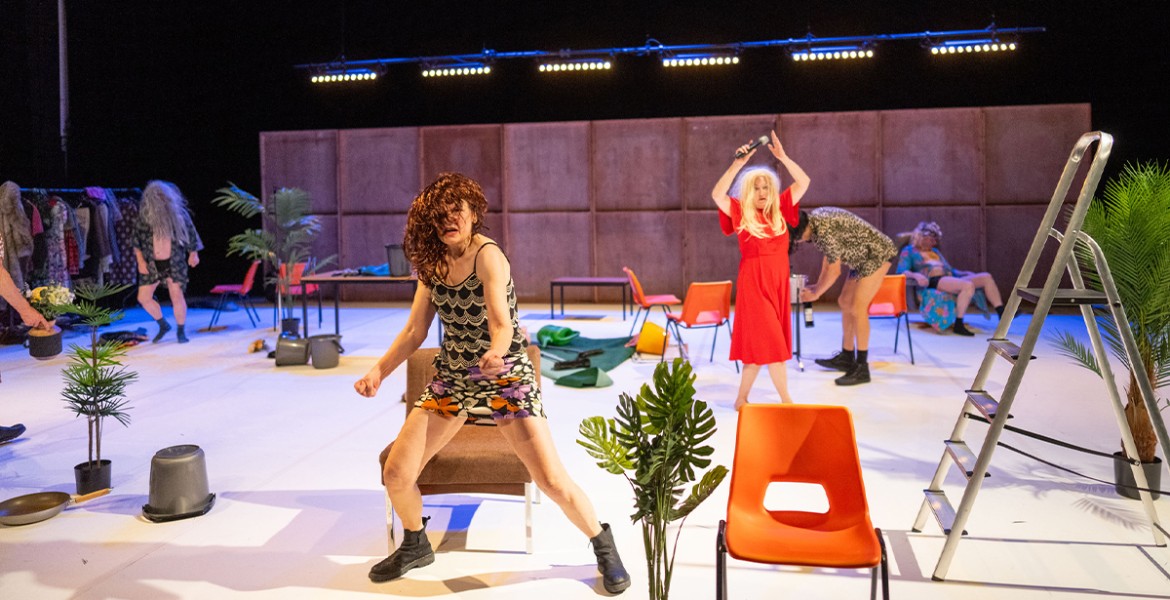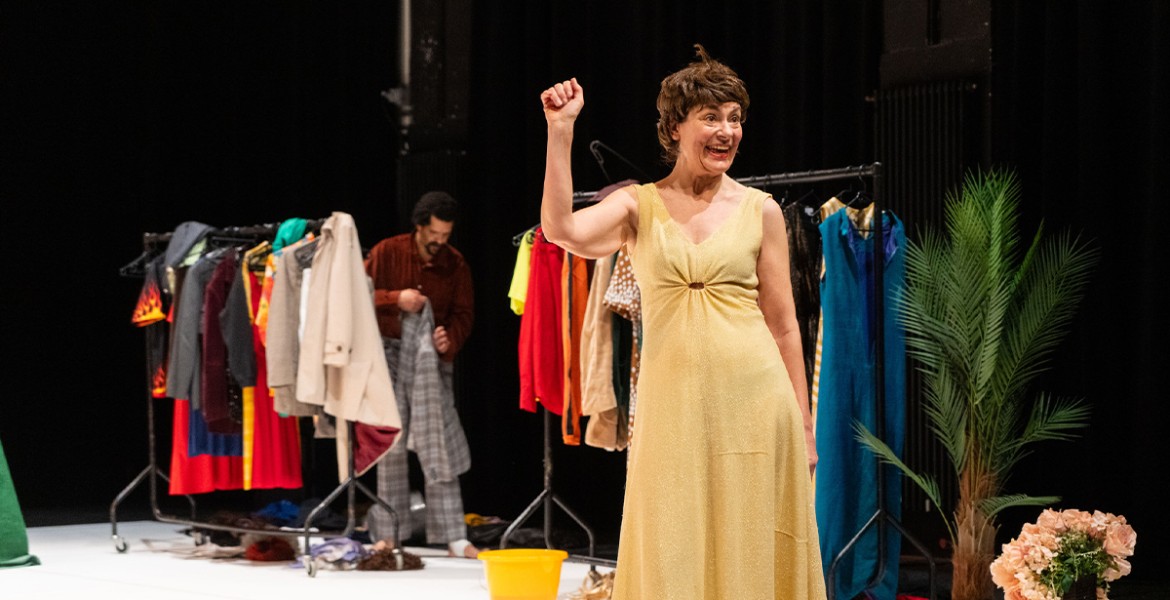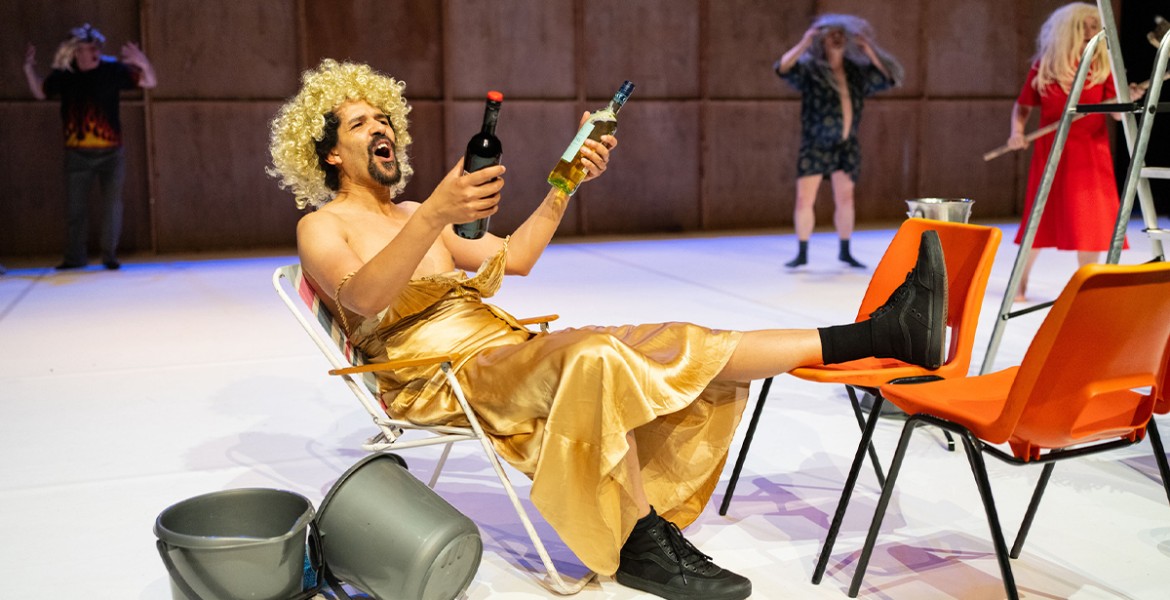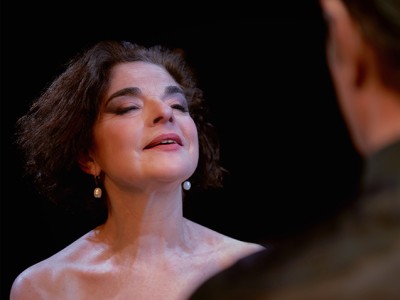Point Of View
Signal to noise - Κριτική
Νάγια ΠαπαπάνουΗ σκηνή θυμίζει στούντιο - πλατό, με έπιπλα και σκηνικά αντικείμενα, κοστούμια κρεμασμένα σε κινητές κρεμάστρες και μικρόφωνα. Οι ηθοποιοί μπαίνουν ο ένας μετά τον άλλο, αρχίζουν να μετακινούν τα σκηνικά, τα έπιπλα, ενώ εμείς ακούμε ένα ηχητικό τσεκ «Ένα... Δύο... Τρία... δοκιμή...». Σύντομα, κι ενώ ο λόγος επαναλαμβάνεται σαν ηχητική λούπα, διαφαίνεται η πρόθεση και ο χαρακτήρας της παράστασης. Οι ηθοποιοί ακολουθώντας έναν ρυθμικό κανόνα, ερμηνεύουν τον κατακερματισμένο λόγο, δοκιμάζοντας τα κοστούμια, τους χαρακτήρες, τις συνθήκες, τα σκηνικά. “... Αυτή είναι η φωνή μου?... Αυτά είναι τα χέρια μου?... Ένα... Δύο... Τρία... δοκιμή... μπορείς να μ’ ακούσεις;»
Οι Robin Arthur, Seke Chimutengwende, Richard Lowdon, Claire Marshall, Cathy Naden και Terry O'Connor ερμηνεύουν το έργο που οι ίδιοι επινόησαν. Είναι ταυτόχρονα συντελεστές και ερμηνευτές της παράστασης, και από κάθε ιδιότητα αναζητούν την άμεση σχέση με το κοινό, κοιτάζοντας το πλήθος των θεατών με κάθε λέξη, θραύσμα λόγου που ερμηνεύουν. Το έργο που έχουν δημιουργήσει έχει πολλαπλές αναγνώσεις, ο καλλιτεχνικός υπαρξισμός των ηθοποιών επί σκηνής, που αμφισβητούν την ερμηνεία τους, είναι η πιο προφανής των αναγνώσεων. Η υπαρξιακή συνθήκη του ερμηνευτή συναντά την περιβαλλοντική κρίση, όταν οι ηθοποιοί που σχηματίζουν ένα πάνελ αρχίζουν να αναφέρονται στον καιρό και τις απίστευτα υψηλές θερμοκρασίες αναδεικνύοντας το εμπειρικο στοιχείο της δραματουργίας. Το κείμενο ερμηνεύεται σαν αποσπασματικοί μονόλογοι, οι οποίοι φέρονται ως διάλογοι με τον τρόπο που παραστώνται. Τόσο δραματουργικά όσο και παραστατικά, στο έργο "Signal to noise" μπορούμε να διακρίνουμε μεστές αναφορές στο in-yer-face και το θέατρο του παραλόγου.
Ο κατακερματισμός του κειμένου, καθώς και η σκηνοθεσία εστιάζουν σε αυτόν τον επαναλαμβανόμενο “κανόνα”, η συνολική εμπειρία από τον αποσπασματικό λόγο που πολλαπλασιάζεται φωνητικά φέρνει την μονάδα μέσα στο σύνολο και αντίστροφα. Αν και κάθε ηθοποιός επαναλαμβάνει ως επί το πλείστον το ίδιο κείμενο, η ερμηνεία του κειμένου υπόκειται στην εκάστοτε επιλογή υποδυόμενου χαρακτήρα, γεγονός που επιτείνει αυτό το μοναδικό συναίσθημα συλλογικής εμπειρίας. Με τις περούκες, τα σκηνικά, τα κοστούμια και τη σωματικότητα κάθε «περσόνας» που επιλέγουν να παίξουν οι ηθοποιοί, έχουμε το μοναδικό προνόμιο να παρακολουθούμε μια παράσταση με πολυάριθμους χαρακτήρες. Πρέπει να παραδεχτώ ότι ο «πρωτόγονος άνθρωπος» του Richard Lowdon είναι αρκετά εντυπωσιακός, και όλοι οι χαρακτήρες που ερμηνεύονται από τους Robin Arthur, Seke Chimutengwende, Claire Marshall, Cathy Naden και Terry O'Connor είναι εξίσου ενδιαφέροντες.
Το "Signal to noise" είναι μια ιδιαίτερα απαιτητική παράσταση όχι μόνο για τους ηθοποιούς, αλλά και για τους θεατές. Θα έκλινα προς μια παράσταση με ελαφρώς μικρότερη διάρκεια, όχι αφαιρώντας, αλλά σφίγγοντας την εισαγωγή της παράστασης. Αν και εκτιμώ τον κλιμακωτό ρυθμό της υποκριτικής, ο ρυθμός της λεκτικής έκφρασης σε συνδυασμό με τον ηχητικό σχεδιασμό μπορεί να απευαισθητοποιήσει τους θεατές. Το φινάλε κυρίως δημιουργεί την προσδοκία μιας «λύσης», ενός «τέλους» καθώς βλέπουμε τα σκηνικά να μαζεύονται, τους ηθοποιούς να αποχωρούν σιγά-σιγά και τη σαφή δήλωση «αυτό είναι». Ωστόσο, το ίδιο το κείμενο και η επιτελεστικότητα του (performativity), λειτουργούν εύστοχα, “υπόγεια”, χαράσσοντας στο υποσυνείδητο τις ανησυχίες των δημιουργών του.
Σύλληψη και επινόηση Forced Entertainment, Σκηνοθεσία Tim Etchells, Δραματουργία Tyrone Huggins, Σχεδιασμός φωτισμού Nigel Edwards, Σχεδιασμός ήχου Tim Etchells & John Avery, Σκηνικά Richard Lowdon, Οργάνωση παραγωγής Jim Harrison
Επινόηση – Ερμηνεία Robin Arthur, Seke Chimutengwende, Richard Lowdon, Claire Marshall, Cathy Naden, Terry O’Connor
Τεχνικός διευθυντής περιοδείας Alex Fernandes
Παραγωγή Forced Entertainment
Συμπαραγωγή Φεστιβάλ Αθηνών Επιδαύρου, Centre Pompidou (Γαλλία), Festival d’Automne à Paris, HAU Hebbel Am Ufer (Γερμανία), Holland Festival (Ολλανδία), Kunstler*innenhaus Mousonturm (Γερμανία), PACT Zollverein (Γερμανία), Theatre Garonne (Γαλλία)
Signal to noise - Review
On stage there is a set, like a studio set, with furniture and props, costumes on cloth hanger racks, and microphones. The actors enter one after the other, start moving the props, the furniture, while we listen to a sound check “one… two… three… testing…”. Soon we realize there must be something “off” as the “testing” becomes a loop. The actors pick up this clockwork, fragmented speech, testing costumes, characters, conditions, sets; “... is this my voice?... are these my hands?... one… two… three… testing… can you hear me?”
“Signal to noise” is devised and performed by Robin Arthur, Seke Chimutengwende, Richard Lowdon, Claire Marshall, Cathy Naden and Terry O’Connor. Both collaborators and performers of the show, they seek for the immediate relationship with the audience, looking into the crowd of spectators with every word, fragment of speech they act out. The play that they have created has multiple readings, the obvious one being the existentialism of performers on stage, self doubting their performance. The existential condition of the performer meets with the environmental crisis, when the actors forming a panel start “looping” about the weather and the incredibly high temperatures highlighting the experiential feature of the play.Further into this fragmentation of monologue that often appear as dialogues one can depict light nuances of in-yer-face theatre and theatre of the absurd genuinely infused in the play.
The fragmentation of the text, as well as the mise en scène that focuses on this clockwork chorus - like delivery of the play, multiplies the voices of this single experience, bringing the whole into the one and vice versa. Although each actor mostly repeats the same text, the interpretation of the text falls under the choice of character, which brings out this unique feeling of collective experience. With the wigs, the props, the costumes and the physicality of every “persona” that the actors choose to play, we have the unique privilege of attending a play with numerous characters. I must admit that the “primitive man” of Richard Lowdon is quite a sensation, and all characters performed by Robin Arthur, Seke Chimutengwende, Claire Marshall, Cathy Naden and Terry O’Connor are equally intriguing.
“Signal to noise” is a highly demanding performance not only for the actors, but the spectators as well. I would sympathize with a slightly smaller duration, not by cutting anything out, rather tightening the intro of the show. Although I appreciate the climaxing rhythm of the acting, the verbal expression’s rhythm in conjunction with the sound design occasionally wears out the spectators’ stimuli. The play’s staging generates the expectation of a “solution”, an “end” as we see the sets being cleared, the actors slowly exiting, and the clear statement “this is it”. Nevertheless the text itself as well as the performativity aim perfectly, although discreetly, to the subconscious forging of the creators’ anxieties.
Conceived and devised by the company, Director Tim Etchells, Devised and performed by Robin Arthur, Seke Chimutengwende, Richard Lowdon, Claire Marshall, Cathy Naden and Terry O’Connor
Dramaturgy Tyrone Huggins, Design Richard Lowdon, Sound Design Tim Etchells, Lighting Design Nigel Edwards, Production Management Jim Harrison, Touring Technical Manager Alex Fernandes,
Producer Eileen Evans, World Premiere 21st March, 2024 at PACT Zollverein, Essen
Forced Entertainment Artistic Team
Tim Etchells (Artistic Director), Robin Arthur, Richard Lowdon (Designer), Claire Marshall, Cathy Naden and Terry O’Connor.
Forced Entertainment Management Team
Deborah Chadbourn (Co-Executive Director), Eileen Evans (Co-Executive Director), Jim Harrison (Touring Producer & Production Manager), Jessica Matthews (Participation Producer).
ΔΙΑΒΑΣΤΕ ΑΚΟΜΑ
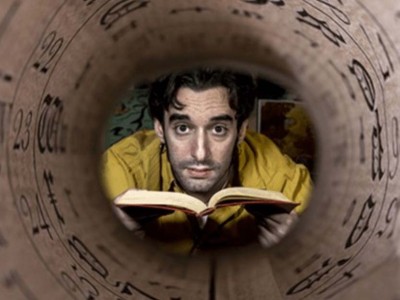
Το χρονικό ενός δυσλεκτικού του Γιάννη Πάσχου
Σκηνοθεσία: Ντίνος Ψυχογιός | Παράταση μέχρι 23 Φεβρουαρίου 2025

Έλλη Πασπαλά | Καλοκαιρινά βράδια έρχονται
Η Έλλη Πασπαλά εμφανίζεται την Τρίτη 16 Ιουλίου στο Θέατρο Κολωνού στο πλαίσιο των εκδηλώσεων με τίτλο Καλοκαίρι στην Αθήνα....
Σχόλια χρηστών
Για να συμμετέχετε στην συζήτηση πρέπει να γίνετε μέλη. Λάβετε μέρος σε κάποια συζήτηση κάνοντας roll-over στο αρχικό σχόλιο και πατήστε το κουμπί "Απάντηση". Για να εισάγετε ένα νέο σχόλιο χρησιμοποιήστε την φόρμα στο τέλος της λίστας.

